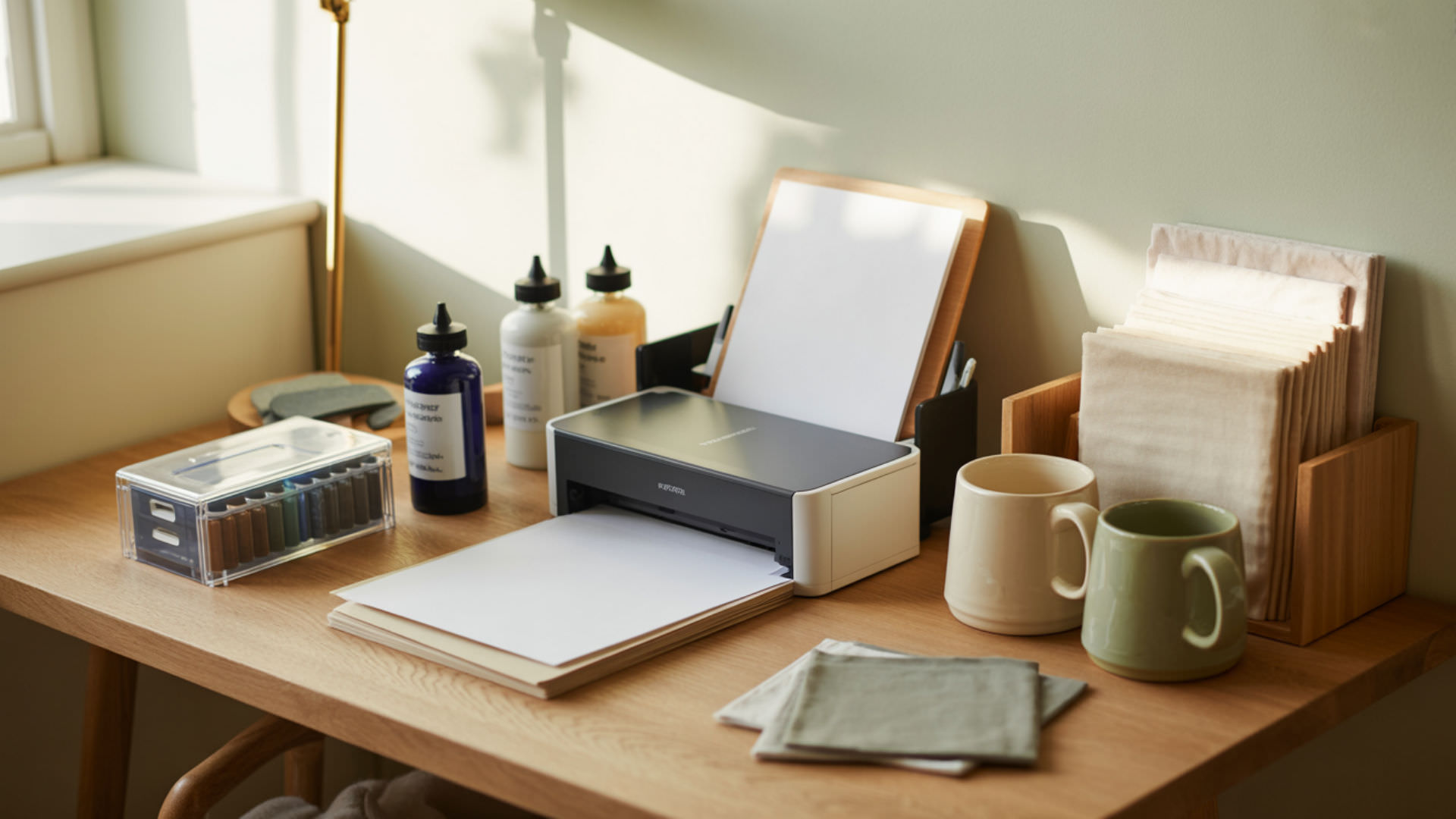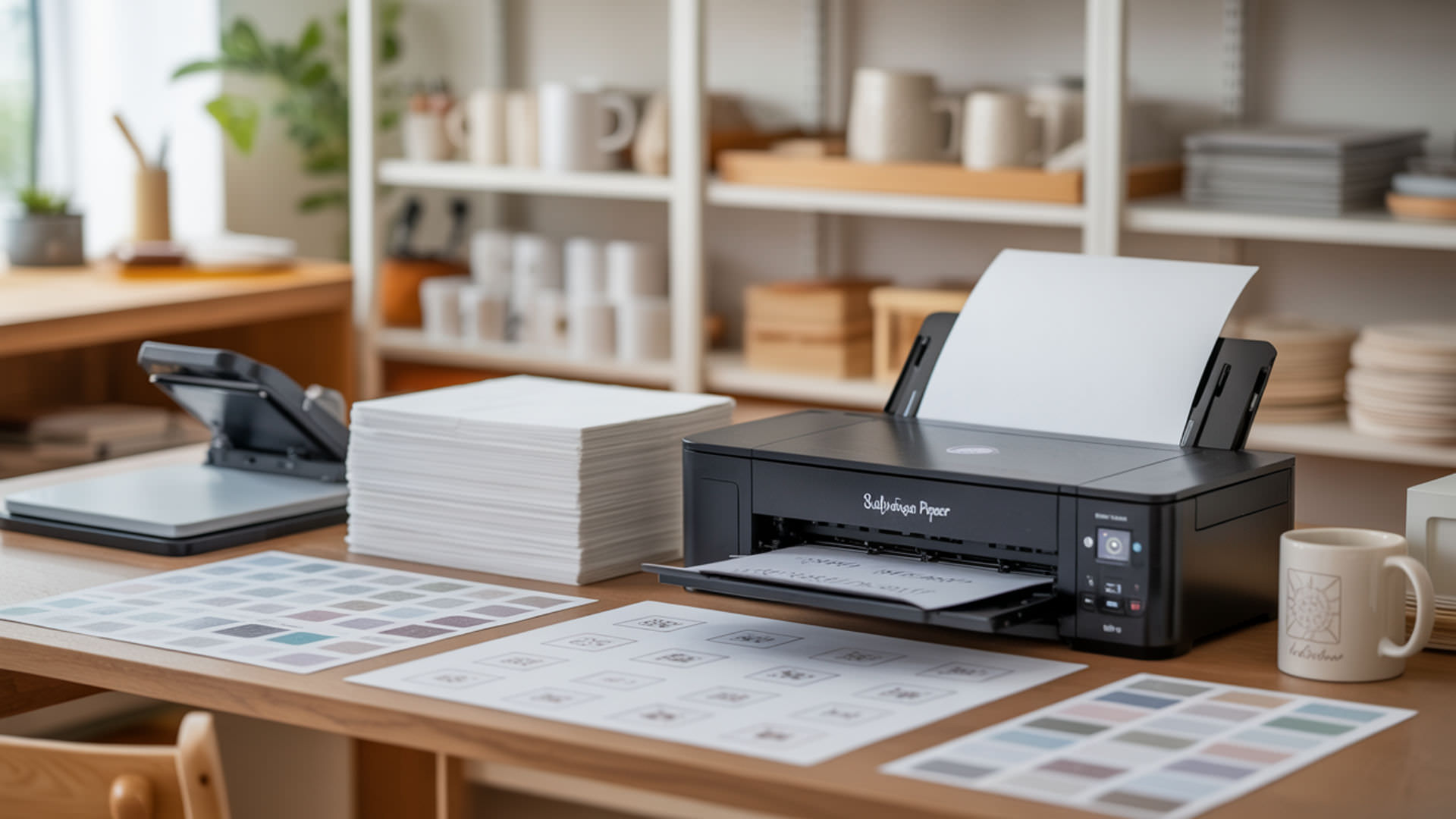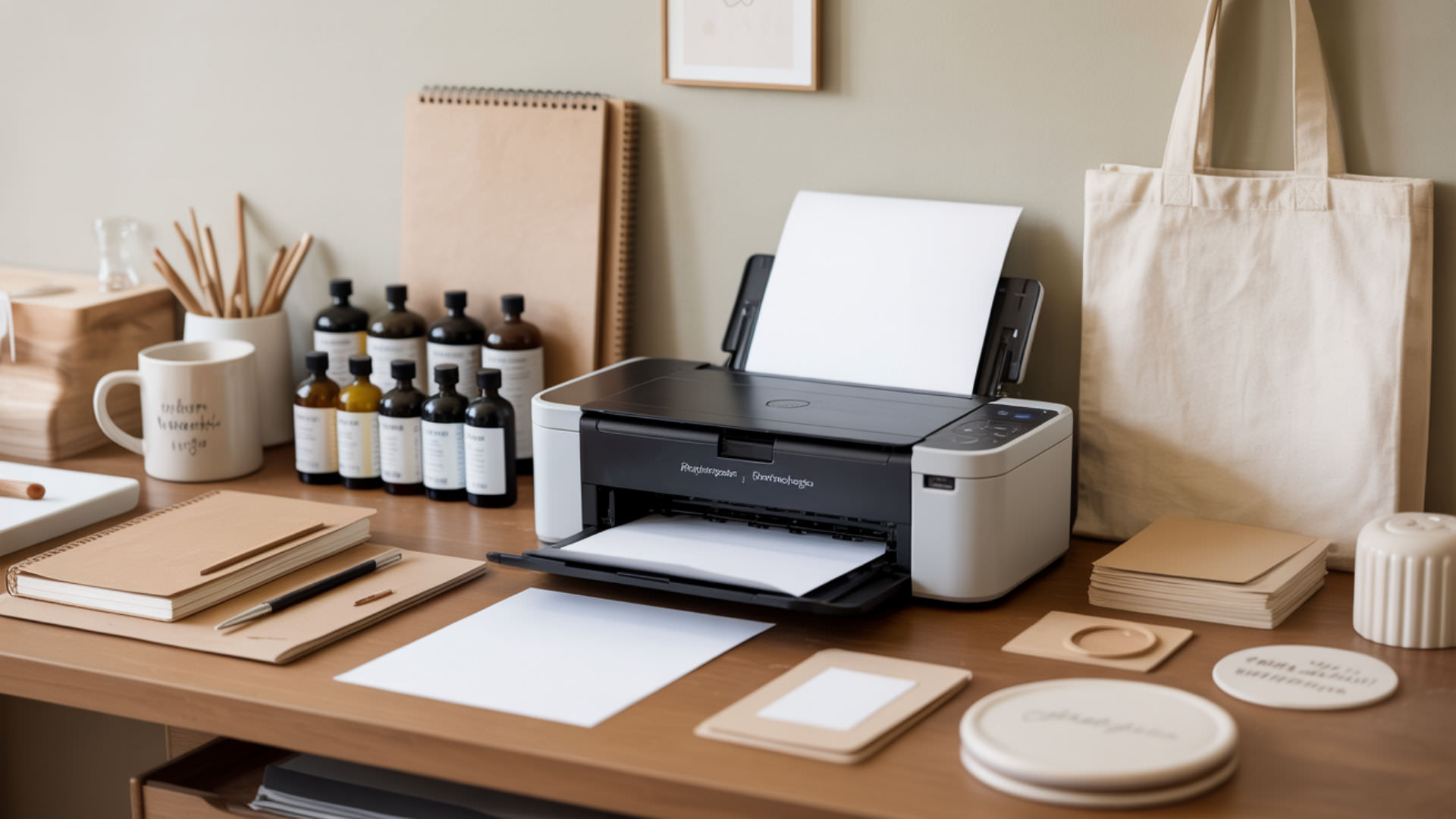Table of Contents
ToggleAn Epson WorkForce printer uses a MicroPiezo printhead that fires ink droplets through piezoelectric vibration rather than heat. This cold-firing mechanism makes WorkForce models compatible with sublimation ink CMYK formulations. Cartridge-based WorkForce printers require refillable sublimation cartridges to complete the conversion, as detailed in our guide to Epson WorkForce printer conversion for sublimation. OEM pigment or dye ink must be fully replaced before sublimation use. Epson WorkForce printers use piezoelectric actuators that mechanically eject ink droplets through electrical vibration rather than heat. [1]
Key Takeaways
- OEM pigment or dye ink must be completely purged from the ink pathway before adding sublimation ink to prevent color contamination and chemical reactions.
- Ink flushing removes residual OEM pigments from internal tubing, dampers, and the printhead assembly to prepare the system for sublimation chemistry.
- Printhead clogging is the most common failure when switching ink types without proper preparation, often requiring multiple cleaning cycles or professional repair.
Can an Epson WorkForce printer be converted to sublimation?

Yes, Epson WorkForce printers can be converted because they use piezoelectric actuator technology that fires ink droplets without heat. Sublimation ink CMYK is only compatible with piezo-based printheads, not thermal systems. Both WorkForce and EcoTank models rely on the same piezoelectric actuator principle for sublimation compatibility. The piezo crystals pulse when electrical signals are applied, creating precise droplet placement at up to 50,000 firings per second.
Which Epson WorkForce printers can be converted to sublimation?
WorkForce models including the WF-3620, WF-3640, WF-7110, WF-7210, WF-7610, WF-7620, WF-7710, and WF-7720 support conversion. Each ink cartridge slot must be replaced with refillable sublimation cartridges filled with sublimation ink. Wide-format models like the WF-7720 can print up to 13×19 inches, making them suitable for adult-sized garment transfers.
What Epson WorkForce printers can be used for sublimation?
Any WorkForce printer equipped with a MicroPiezo printhead can theoretically accept sublimation ink. The WorkForce printhead technology determines compatibility across different models. PrecisionCore variants offer enhanced droplet control with resolution up to 4800×2400 DPI. Models using 252XL cartridges have the widest availability of refillable sublimation cartridge options from third-party suppliers.
Can Epson WorkForce WF-2930 be used for sublimation?
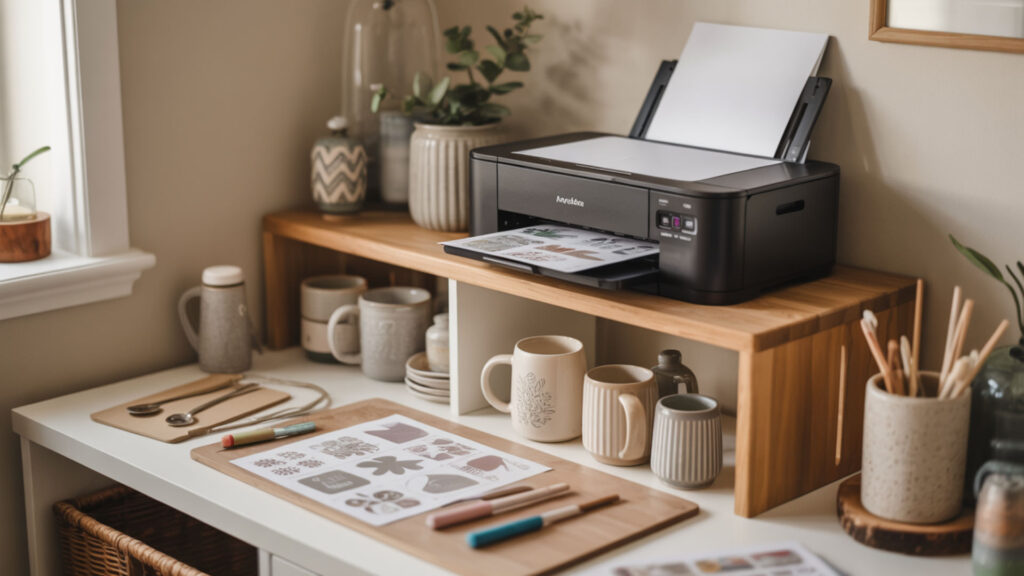
The WF-2930 can technically be converted, but Epson does not recommend it. Cartridge chips on this model may block third-party sublimation cartridges, requiring a chip resetter to bypass OEM restrictions. For easier conversion without chip complications, the cartridge chips-free EcoTank ET-2800 offers a simpler alternative. Using non-genuine ink voids the manufacturer warranty.
Can the Epson WorkForce 2950 be used for sublimation?
The WF-2950 can accept sublimation ink after proper preparation. OEM pigment or dye ink must be cleared through ink flushing before conversion. However, users report this compact model creates more hassle than benefit since it lacks wide-format capability. Many converters recommend EcoTank models instead for simpler workflows.
Can the Epson WorkForce WF-2950 be used for sublimation?
Converting the WF-2950 requires refillable sublimation cartridges with compatible chips. The initial ink charge primes the printhead with sublimation ink after OEM ink removal. Single-use chip cartridges are available for models using 232XL cartridges, though auto-reset chip versions provide more economical long-term refilling compared to single-use alternatives.
Which other WorkForce models can be converted?

Most Epson WorkForce printers with piezo printheads support conversion. After installing sublimation cartridges, run a nozzle check to confirm all ink channels fire correctly. Multiple cleaning cycles clear residual OEM ink from the system.
Is the Epson WorkForce WF-2850 a sublimation printer?
No, the Epson WorkForce WF-2850 ships as a standard inkjet printer with OEM pigment or dye ink. It becomes a sublimation printer only after conversion by replacing factory ink with sublimation ink CMYK. The piezoelectric printhead makes conversion possible, but modifying the printer voids the manufacturer warranty.
Can you use an Epson WorkForce WF-2950 for sublimation?
Yes, with refillable sublimation cartridges installed and filled with sublimation ink. The WF-2950 accepts aftermarket cartridges designed for the 232XL format. However, cartridge-based conversions require more manual maintenance than EcoTank systems. Users must periodically refill cartridges using syringes and monitor ink levels manually.
How do you convert a WorkForce printer step-by-step?

The conversion process involves removing factory ink and replacing it with sublimation ink through refillable cartridges. Follow these steps for a successful WorkForce conversion:
- Remove all OEM ink cartridges from the printer.
- Fill refillable sublimation cartridges with CMYK sublimation ink using syringes.
- Install the filled cartridges into each slot.
- Run ink flushing through 3-5 printhead cleaning cycles.
- Perform an initial ink charge to prime the printhead.
- Print a nozzle check to verify all channels fire correctly.
- Install ICC color profiles for accurate sublimation output.
How do you change a used Epson printer to sublimation?
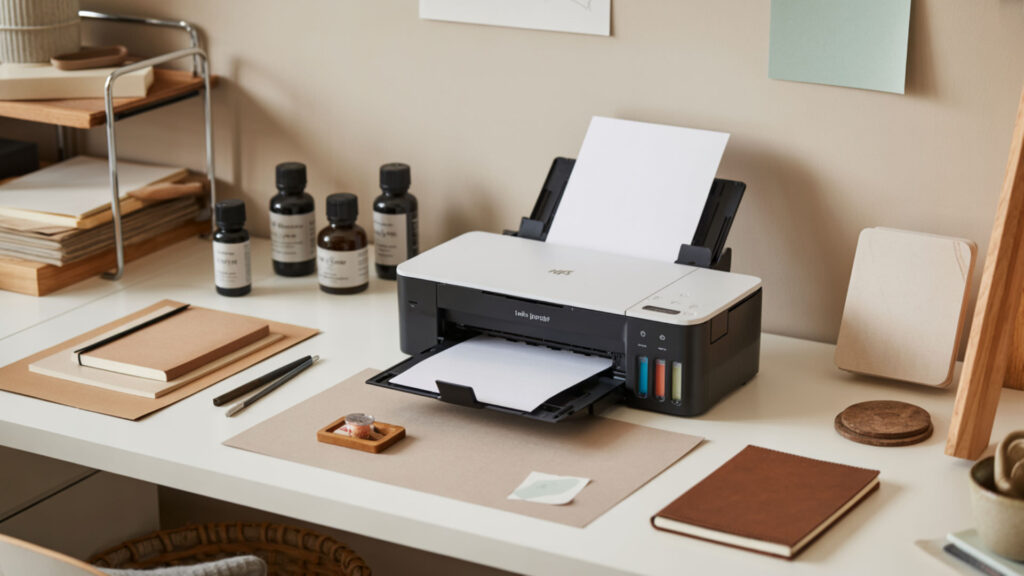
Used printers require deeper preparation than new units. Printhead clogging occurs more frequently in previously used printers because dried OEM ink accumulates in nozzles. Run five or more cleaning cycles to eliminate residual pigments. Brand-new printers achieve over 90% conversion success rates, while used printers drop to 60-70% after thorough flushing.
How do I know if my printer is a sublimation printer?
Check the printhead technology in your printer specifications. A piezoelectric actuator signals compatibility with sublimation ink CMYK. Thermal inkjet printers from HP and Canon cannot be converted because heat damages sublimation dye chemistry. Epson models marketed as EcoTank, WorkForce, or Artisan typically use piezo technology suitable for conversion. Inkjet printers move liquid ink through internal channels and microscopic nozzles, which is why all original ink must be flushed before converting an Epson WorkForce printer to sublimation.[2]
Which way do you put sublimation paper in the printer?
Sublimation transfer paper has a bright white printable side that faces up in top-loading trays and down in front-loading cassettes. The printable side feels slightly tacky when touched with a damp finger. Media handling varies by printer design, so check your specific model’s paper feed orientation before printing transfers.
What are the best Epson printers for sublimation conversion?
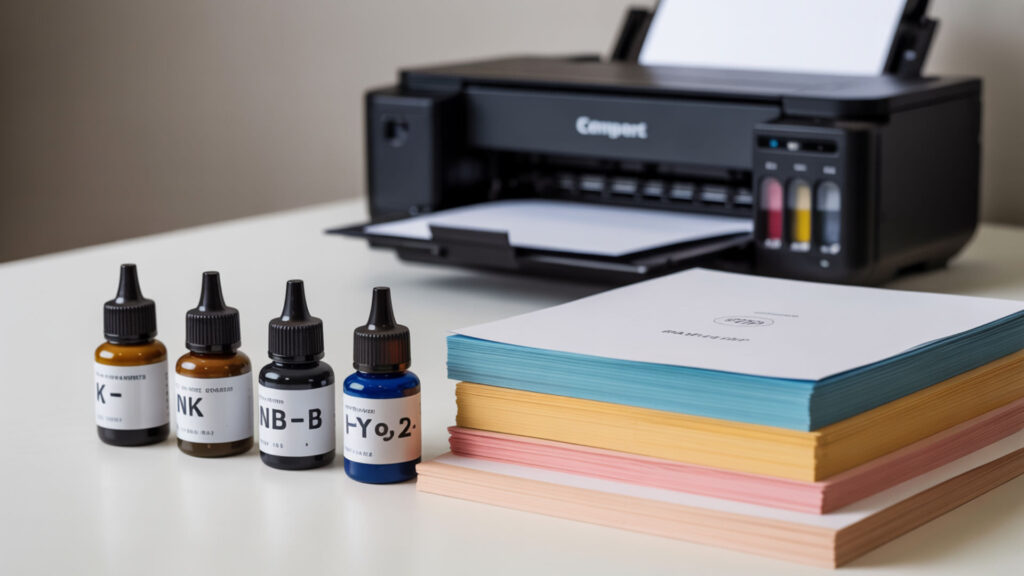
EcoTank models offer the easiest conversion because tank-based systems eliminate cartridge chip complications. WorkForce printers suit users who already own them or need specific features like wide-format printing. For detailed running cost comparison between models, our ET-8550 review covers ink efficiency for small business suitability. Wide-format WorkForce models serve businesses requiring 13×19 inch prints.
What Epson printer can be used for sublimation?
Any Epson WorkForce printer with a MicroPiezo printhead supports sublimation conversion. Popular choices include the WF-7710 and WF-7720 for wide-format capability. EcoTank models like the ET-2800 and ET-15000 provide simpler conversion paths. The WorkForce printhead technology shared across these models enables consistent sublimation results.
What is the best cheap sublimation printer?
The Epson EcoTank ET-2800 offers the lowest entry cost at approximately $200-230 for standard format printing. Running cost comparison favors EcoTank systems because bulk ink refills cost less than cartridge replacements. For wide-format needs on a budget, finding a used WF-7720 provides 13×19 inch capability at reduced upfront cost.
What are the downsides of using an Epson printer for sublimation?

Printhead clogging remains the primary risk when printers sit unused for extended periods. Sublimation ink dries faster than standard ink, blocking nozzles within days of inactivity. Banding appears as horizontal lines when clogged nozzles skip ink delivery. Regular weekly printing or nozzle checks prevent most clogs. Conversion also voids the manufacturer warranty permanently.
Should you shake sublimation ink?
Do not shake sublimation ink CMYK bottles before filling printer tanks or cartridges. Shaking introduces air bubbles that disrupt ink flow and cause print defects. Instead, gently invert bottles to mix settled pigments. Store ink away from direct sunlight and use within the manufacturer’s recommended timeframe.
What is the difference between ET-8550 and ET-15000 for sublimation?
The ET-8550 produces superior photo quality with six-color printing and higher print resolution DPI output at 5760×1440. The ET-15000 handles larger sublimation transfer paper sizes up to 13×19 inches and offers lower cost per page. Choose ET-8550 for detailed photographic work and ET-15000 for high-volume garment production.
Ready to Convert Your WorkForce Printer?
Gather your refillable sublimation cartridges, sublimation ink CMYK, and sublimation transfer paper to begin the conversion process. Start with a brand-new printer when possible for the highest success rate. Print weekly to prevent nozzle clogs and maintain vibrant color output. Your WorkForce can produce professional-quality sublimation transfers for years.
Frequently Asked Questions
Can office-style printers be used for sublimation conversion?
Yes, Epson WorkForce printers designed for office use can be converted to sublimation when they feature piezoelectric printheads. The conversion requires replacing OEM ink with sublimation ink through refillable cartridges.
Are multifunction printers compatible with sublimation ink?
Multifunction WorkForce printers with scan, copy, and fax features remain compatible with sublimation ink CMYK after conversion. The additional functions continue working normally after the ink change.
Can a standard home printer be turned into a sublimation printer?
Only Epson printers with piezo technology can convert. HP and Canon home printers use thermal inkjet technology that destroys sublimation dye chemistry through heat exposure during printing.
Can a previously used printer be converted to sublimation?
Used printers can convert but require extensive ink flushing. Expect five or more cleaning cycles to clear residual OEM ink. Success rates drop from 90% with new printers to 60-70% with used units due to potential printhead clogging.
What factors determine whether a printer can be converted?
Printhead technology determines conversion compatibility. Piezoelectric printheads found in Epson WorkForce and EcoTank models accept sublimation ink. Availability of refillable cartridges for your specific model also affects conversion feasibility.
References
- Epson ET-2750. (n.d.). Epson Global Portal. https://epson.com/Support/Printers/All-In-Ones/ET-Series/Epson-ET-2750/s/SPT_C11CG22201
- Epson ET-2750. (n.d.). Epson Global Portal. https://epson.com/Support/Printers/All-In-Ones/ET-Series/Epson-ET-2750/s/SPT_C11CG22201



